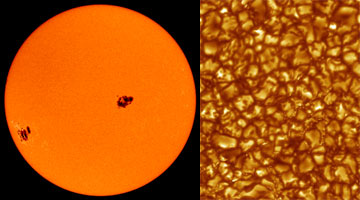The photosphere is the visible "surface" of the Sun (left). Sunspots are often visible "on" the photosphere. A close-up view (right) shows the granulation pattern on the photosphere.
Click on image for full size
Images courtesy of SOHO/NASA/ESA and The Royal Swedish Academy of Sciences and Oddbjorn Engvold, Jun Elin Wiik, and Luc Rouppe van der Voort - University of Oslo.
The Photosphere - the "Surface" of the Sun
Most of the energy we receive from the Sun is the visible (white) light emitted from the photosphere. The photosphere is one of the coolest
regions of the Sun (6000 K), so only a small fraction (0.1%) of the gas is
ionized (in the plasma state). The photosphere is the densest
part of the solar atmosphere, but is still tenuous compared to
Earth's atmosphere (0.01% of the mass density of air at sea level).
The photosphere looks somewhat boring
at first glance: a disk with some dark spots. However, these
sunspots
are the site of strong magnetic fields. The solar magnetic field is believed to drive the complex
activity seen on the Sun.
Magnetographs measure the solar magnetic field at the photosphere.
Because of the tremendous heat coming from the solar core, the solar interior below
the photosphere (the convection zone) bubbles like a pot of boiling water.
The bubbles of hot material welling up from below are seen at the photosphere
as slightly brighter regions. Darker regions occur where cooler plasma
is sinking to the interior. This constantly churning pattern of convection
is called the solar granulation pattern.
You might also be interested in:

Plasma is known as the fourth state of matter (the first three states being solid, liquid and gas).Matter in ordinary conditions on Earth has electrons that orbit around the atomic nucleus. The electrons
...more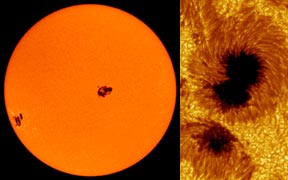
Sunspots are dark, planet-sized regions that appear on the "surface" of the Sun. Sunspots are "dark" because they are cooler than their surroundings. A large sunspot might have a central temperature of
...more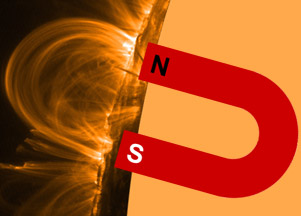
Sunspots are caused by extremely strong, localized magnetic fields on the Sun. "Jet streams" of plasma that form deep within the Sun's convective zone produce powerful magnetic fields. When these loops
...more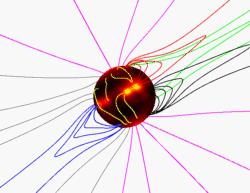
The Sun has a very large and very complex magnetic field. The magnetic field at an average place on the Sun is around 1 Gauss, about twice as strong as the average field on the surface of Earth (around
...more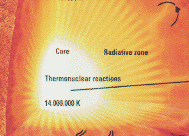
The solar core is made up of an extremely hot and dense gas (in the plasma state). Despite a density of 160,000 Kg/m3, the temperature of 15 million kelvins (27 million degrees Faranheit) prevents the
...more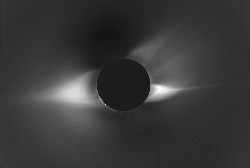
The last solar eclipse of this millennium occurred on August 11, 1999. Amateurs and professionals alike used this opportunity to witness one of the most brilliant natural phenomenon. This was a total
...more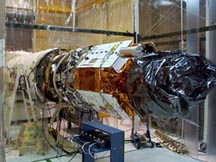
On March 30, 1998, the TRACE spacecraft will be launched. TRACE stands for Transition Region and Coronal Explorer. This spacecraft has four telescopes aboard that are sensitive to the extreme-ultraviolet
...more


